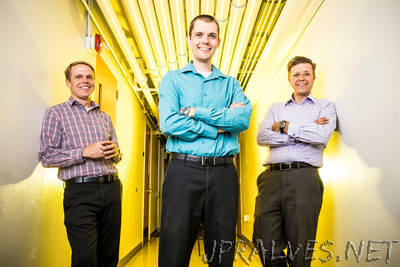
“It may not be as catchy as chains and weak links, but physicists and engineers know “a material is only as strong as its weakest grain boundary.” OK, that’s not catchy at all, but here’s the point: grain boundaries are a big deal. They are the microscopic, disordered regions where atom-sized building blocks bind the crystals (i.e. grains) together in materials. More importantly, grain boundaries help determine the properties of metals important to humans. For example, they can influence a metal’s strength (buildings!), corrosion resistance (bridges!) and conductivity (electricity!). But while researchers have studied grain boundaries for decades and gained some insight into the types of properties grain boundaries produce, no one has been able to nail down a universal system to predict if a certain configuration of atoms at grain boundaries will make a material stronger or more pliable. Enter the interdisciplinary BYU research team of Rosenbrock, Homer and Hart. The Ph.D. student (Conrad Rosenbrock) and two professors — one engineer (Eric Homer) and one physicist (Gus Hart) — might have cracked the code by juicing a computer with an algorithm that allows it to learn the elusive “why” behind the boundaries’ qualities. Their method, published in the most recent issue of Nature journal Computational Materials, provides a technique to produce a “dictionary” of the atomic building blocks found in metals, alloys, semiconductors and other materials. Their machine learning approach analyzes Big Data (think: massive data sets of grain boundaries) to provide insight into physical structures that are likely associated with specific mechanisms, processes and properties that would otherwise be difficult to identify. “We’re using machine learning, which means algorithms can see trends in lots and lots of data that a human can’t see,” Homer said. “With Big Data models you lose some precision, but we’ve found it still provides strong enough information to connect the dots between a boundary and a property.” When it comes to metals, the process can evaluate properties like strength, weight and lifespan of materials, leading to the eventual optimization of the best materials. Although the group is not actually creating materials yet, they can now decipher the “why” and the “how” of the makeup.”
